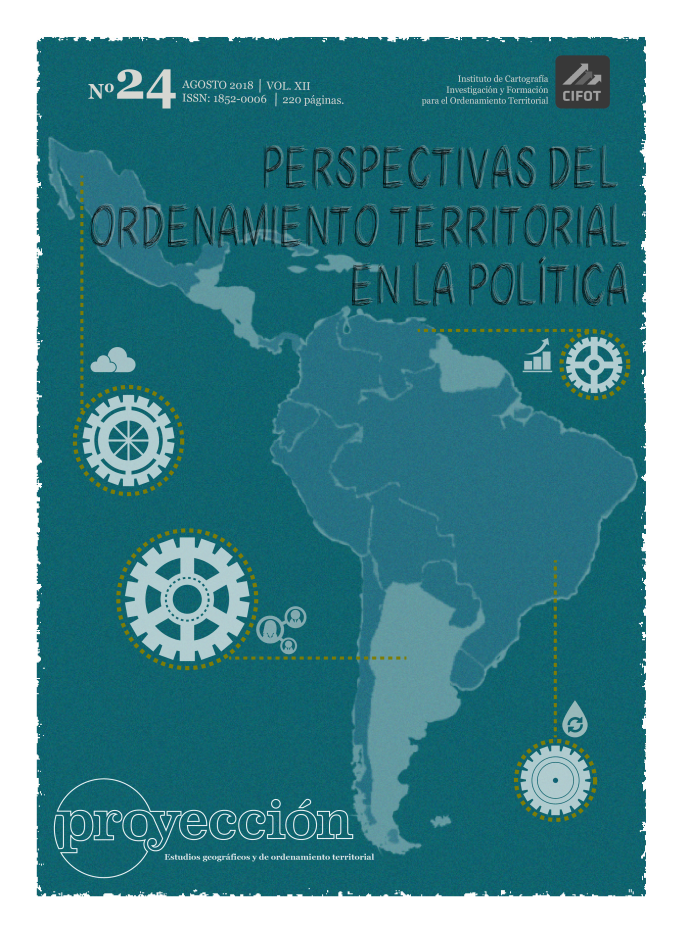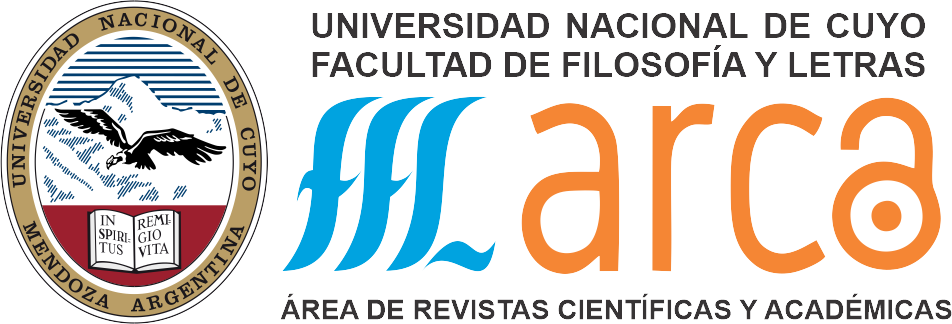The Strategic Metropolitan Guidelines as a Policy for the Consolidation and Completion of the City’s Territory in the Case of Urban Gaps in Tucumán's Metropolitan area
Keywords:
Land-use planning, Urban voids, Public policyAbstract
The recent publication of Metropolitan Strategic Guidelines AM Tucumán (LEM, its Spanish acronym; AMT) is the result of a consulting work that brought together professionals from different specializations around the Observatory of Urban and Territorial Phenomena of the College of Architecture and Urbanism of the Universidad Nacional of Tucumán. It incorporates new possibilities in the field of politics of Land-use Planning. The purpose of this work is to discuss the capacity of LEM AMT to produce changes in land use in the territory of the Metropolitan System of Tucumán (SIMeT, its Spanish acronym), especially regarding Guideline 2 / Consolidation and Completion of the Metropolitan Structure. For this reason, definitions of urban voids are analyzed from different approaches, empty plots are identified, and the data obtained from the territorial space is compared with the programs and projects described in the guidelines.
The results of these analysis allow us to identify the relevance of the large fiscal gaps and the potential of their use to raise the need for a change in public policies within the institutions of national concern in a more sustainable city model. The recovery of Land-use Planning practices achieved from these LEM AMTs, which due to their multi-spatial characteristic they place their axis in the Metropolitan as a space of conflict, open up new possibilities for the definition of territorial policies that include Institutions such as Armed Forces, Railroads and Universities in the discussion and articulation in pursuit of the sustainability of a space as complex as in the SIMeT
References
CLICHEVSKY, N. (2000). Informalidad y segregación urbana en América Latina. Una aproximación. Santiago de Chile,: CEPAL.
COMISIÓN ECONÓMICA PARA AMÉRICA Y EL CARIBE. (2017). Panoramamultimencional del desarrollo urbano en américa latina y el Caribe. Santiago de Chile: Naciones Unidas.
DAMI. (2017). Atlas Metropolitano. San Miguel de Tucumán: FAU, 27.
DAMI. (2017). Informe Final Lem Dami Tucuman. San Miguel de Tucumán,.
DAMI. (2017). "Portal DAMI". [En Línea]. Disponible en: http://www.dami.uec.gov.ar/ [Acceso el 01 de septiembre de 2017]
DE ARAUJO LARANGEIRA, A.( 2004). Tierra Vacante en las ciudades de América latina: Desafíos y Oportunidades. Rio de janeiro: Lincoln Institute of Land Policy.
DE SOLÀ MORALES, I. (2002). Territorios. Barcelona: Gustavo Gili.
FAUSTO, A. y RÁVAGO, J. ( 2001). ¿Vacíos urbanos o vacíos de poder metropolitano? Ciudades . Universidad de Guadalajara, Centro de Estudios Metropolitanos, Guadalajara, México, nº 49 (Ene-mar): 33-39.
LA GACETA.( 2017). El Estadio Único se realizaría en Banda del Río Salí y albergaría a 60.000 personas. La Gaceta de Tucumán, 18 de julio.
OFUT (2017). Observatorio FAU. [En Línea]. Disponible en: http://www.observatoriofau.org/gis/ [Acceso el 1 de Marzo de 2017 2017]
PEIMBERT, A. J. (2011). La representación del vacío. Atlas abreviado de los paisajes intersticiales en la ciudad de Mexicali, México. Proceedings of 7VCT (7TH VIRTUAL CITIES AND TERRITORIES). Lisboa pp.45-49.
ROBLEDO, L. (2011). Vacíos urbanos en la cuenca del reconquista: la reconversión del uso del suelo urbano en grandes predios militares como respuesta a la fragmentación sociourbana. Quilmes, Universidad Nacional de Quilmes. Mundo urbano, nº 37
Downloads
Published
How to Cite
Issue
Section
License

This work is licensed under a Creative Commons Attribution-NonCommercial-ShareAlike 3.0 Unported License.
La revista Proyección establece las siguientes condiciones de publicación para los/as autores/as:
- Los/as autores/as conservan los derechos de autor y ceden a la revista el derecho de publicación bajo la Licencia Creative Commons Atribución-No Comercial-CompartirIgual 3.0 No portada (CC BY-NC-SA 3.0) que permite a terceros copiar, distribuir, exhibir y ejecutar la obra citando siempre la fuente y los datos de autoría según la norma prevista por la Revista Proyección. Esta licencia no permite el uso de la obra con fines comerciales.
- Todos los trabajos publicados por Proyección, Estudios Geográficos y de Ordenamiento Territorial serán bajo la modalidad de gratuidad para autores/as y lectores/as.










